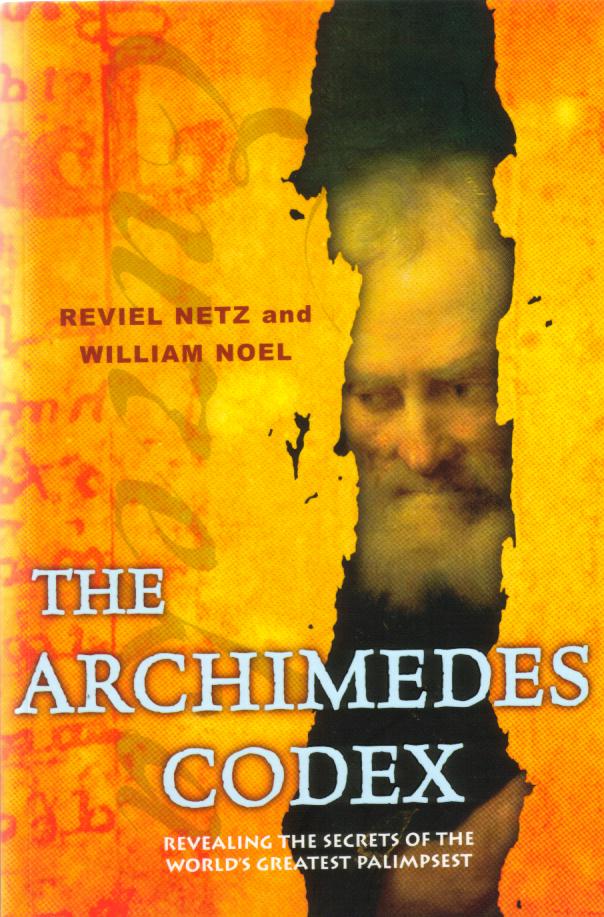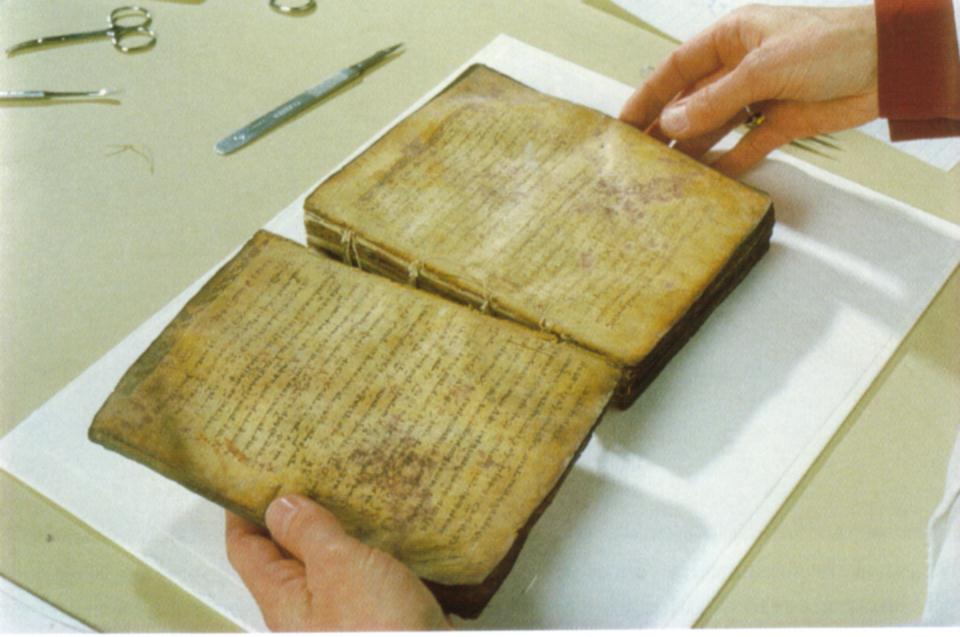Deciphering Christian Apocrypha Palimpsests
 Recently I finished reading Reviel Netz’s and William Noel’s The Archimedes Codex: Revealing the Secrets of the World’s Greatest Palimpsest. The book details the acquisition of a thirteenth-century Christian prayer book that contains, as its underwriting, several works by the third-century BCE Greek mathematician Archimedes. One of these works, Floating Bodies, is found in no other source. But in some places the underwriting is incredibly difficult to read. The Archimedes Codex describes the pioneering scientific efforts to recover Archimedes’ works.
Recently I finished reading Reviel Netz’s and William Noel’s The Archimedes Codex: Revealing the Secrets of the World’s Greatest Palimpsest. The book details the acquisition of a thirteenth-century Christian prayer book that contains, as its underwriting, several works by the third-century BCE Greek mathematician Archimedes. One of these works, Floating Bodies, is found in no other source. But in some places the underwriting is incredibly difficult to read. The Archimedes Codex describes the pioneering scientific efforts to recover Archimedes’ works.
The book led me to thinking about palimpsests of CA texts and the possibility that advances in reading palimpsests could aid in recovering our texts. I am aware only of one such palimpsest: Vindobonensis 563, an eighth-century manuscript written over a fifth-century collection of the Gospel of Nicodemus, the Infancy Gospel of Thomas, and selections from the Gospel of Matthew. Constantin von Tischendorf was the first scholar to see the manuscript and was able to decipher much of it; Guy Philippart (“Fragments palimpsestes latins du Vindobonensis 563 [Ve siècle?]: Évangile selon S. Matthieu, Évangile de Nicodème, Évangile de l’enfance selon Thomas”, AnBoll 90, p. 391-411) revealed more of it in 1972.
 The manuscript is important for the study of Infancy Thomas as it is the earliest known source we have for the text; unfortunately, only a handful of pages from the original manuscript were used by the eighth-century recycler. Virtually all of this material is readable (save for a few lines on two folios). The Gospel of Nicodemus material is far more extensive, stretching over 35 folios. Philippart was able to read more of the text than Tischendorf but did not include the new readings in his article—he believed it needed an edition all its own. I am not aware of such an edition, though the AELAC team working on an edition of Nicodemus may be using it.
The manuscript is important for the study of Infancy Thomas as it is the earliest known source we have for the text; unfortunately, only a handful of pages from the original manuscript were used by the eighth-century recycler. Virtually all of this material is readable (save for a few lines on two folios). The Gospel of Nicodemus material is far more extensive, stretching over 35 folios. Philippart was able to read more of the text than Tischendorf but did not include the new readings in his article—he believed it needed an edition all its own. I am not aware of such an edition, though the AELAC team working on an edition of Nicodemus may be using it.
Are there other palimpsests of CA texts? Is it possible to use the new technology to recover their contents with greater accuracy?

I think that multi-spectral imaging needs to be applied to every palimpsest, and any manuscript where UV light has revealed anything at all. This is quite a large number, but it is clearly a superior technique.
However MSI has been available for a number of years now, yet it doesn’t seem to have become widely available. It remains the special property of a tiny group. Does anyone know why?
Surely we should all be able to use it in a manuscript library, just like we ask for a UV light?
Is MSI not stinky-expensive?